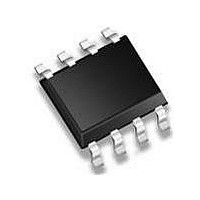M41T00M6 STMicroelectronics, M41T00M6 Datasheet - Page 16

M41T00M6
Manufacturer Part Number
M41T00M6
Description
Real Time Clock Serial 64 (8X8)
Manufacturer
STMicroelectronics
Datasheet
1.M41T00M6.pdf
(25 pages)
Specifications of M41T00M6
Function
Clock, Calendar, Battery Backup
Rtc Memory Size
8 B
Supply Voltage (max)
5.5 V
Supply Voltage (min)
2 V
Maximum Operating Temperature
+ 85 C
Minimum Operating Temperature
- 40 C
Mounting Style
SMD/SMT
Rtc Bus Interface
Serial
Package / Case
SO-8
Time Format
HH:MM:SS
Lead Free Status / RoHS Status
Lead free / RoHS Compliant
Available stocks
Company
Part Number
Manufacturer
Quantity
Price
Company:
Part Number:
M41T00M6E
Manufacturer:
AVAGO
Quantity:
1 000
Part Number:
M41T00M6E
Manufacturer:
ST
Quantity:
20 000
Part Number:
M41T00M6F
Manufacturer:
ST
Quantity:
20 000
Part Number:
M41T00M6TR
Manufacturer:
ST
Quantity:
20 000
16/25
Therefore, each calibration step has the effect of adding 512 or subtracting 256 oscillator
cycles for every 125,829,120 actual oscillator cycles, that is +4.068 or –2.034 ppm of
adjustment per calibration step in the calibration register. Assuming that the oscillator is in
fact running at exactly 32768 Hz, each of the 31 increments in the calibration byte would
represent +10.7 or –5.35 seconds per month which corresponds to a total range of +5.5 or
–2.75 minutes per month.
Two methods are available for ascertaining how much calibration a given M41T00 may
require. The first involves simply setting the clock, letting it run for a month and comparing it
to a known accurate reference (like WWV broadcasts). While that may seem crude, it allows
the designer to give the end user the ability to calibrate his clock as his environment may
require, even after the final product is packaged in a non-user serviceable enclosure. All the
designer has to do is provide a simple utility that accessed the calibration byte.
The second approach is better suited to a manufacturing environment, and involves the use
of some test equipment. When the frequency test (FT) bit, the seventh-most significant bit in
the control register, is set to a '1', and the oscillator is running at 32768 Hz, the FT/OUT pin
of the device will toggle at 512 Hz. Any deviation from 512 Hz indicates the degree and
direction of oscillator frequency shift at the test temperature.
For example, a reading of 512.01024 Hz would indicate a +20 ppm oscillator frequency
error, requiring a –10(XX00 1010b) to be loaded into the calibration byte for correction. Note
that setting or changing the calibration byte does not affect the frequency test output
frequency.
Figure 12. Crystal accuracy across temperature
Frequency (ppm)
–100
–120
–140
–160
–20
–40
–60
–80
20
0
–40
–30
–20
–10
0
10
Temperature °C
T
ΔF = K x (T –T
K = –0.036 ppm/°C
F
O
= 25°C ± 5°C
20
30
O
)
2
40
2
± 0.006 ppm/°C
50
60
2
70
80
AI00999b














